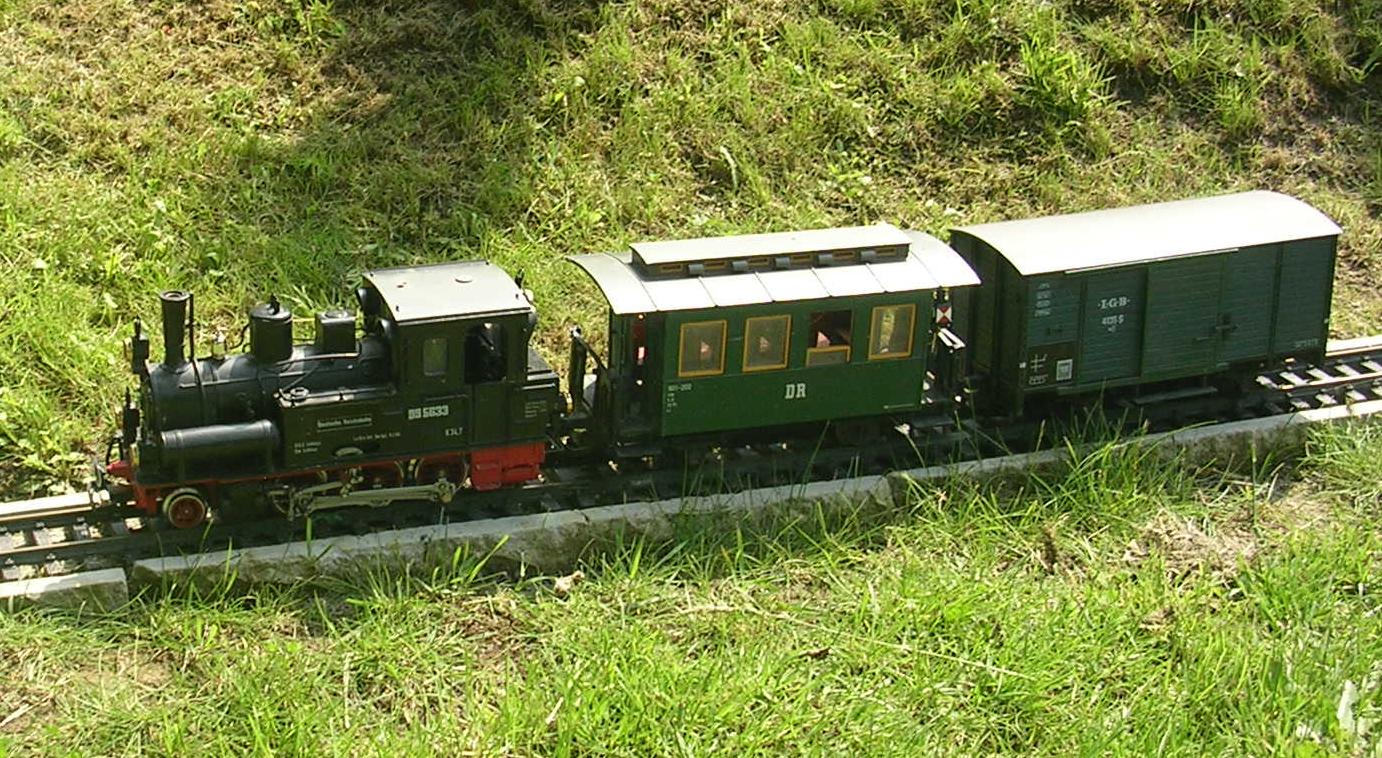2 gauge on:
[Wikipedia]
[Google]
[Amazon]
 Gauge 2 (also called 2 gauge or II gauge) is a
Gauge 2 (also called 2 gauge or II gauge) is a
Association of 16mm Narrow Gauge Modellers
 Gauge 2 (also called 2 gauge or II gauge) is a
Gauge 2 (also called 2 gauge or II gauge) is a model railway
Railway modelling (UK, Australia, New Zealand, and Ireland) or model railroading (US and Canada) is a hobby in which rail transport systems are modelled at a reduced scale.
The scale models include locomotives, rolling stock, streetcars, t ...
gauge
Gauge ( or ) may refer to:
Measurement
* Gauge (instrument), any of a variety of measuring instruments
* Gauge (firearms)
* Wire gauge, a measure of the size of a wire
** American wire gauge, a common measure of nonferrous wire diameter, ...
, originally , then standardised in 1909 at , a 20% reduction and a change in definition: from mm to inch. It has since fallen into disuse. The gauge was introduced by Märklin
Gebr. Märklin & Cie. GmbH or Märklin (MÄRKLIN or MAERKLIN in capital letters) is a German toy company. The company was founded in 1859 and is based at Göppingen in Baden-Württemberg. Although it originally specialised in doll house accesso ...
at the Leipzig
Leipzig ( , ; Upper Saxon: ) is the most populous city in the German state of Saxony. Leipzig's population of 605,407 inhabitants (1.1 million in the larger urban zone) as of 2021 places the city as Germany's eighth most populous, as ...
toy fair in 1891. Gauge 2 was equivalent to a 1:22.5 scale.
Related scales and gauges
After the change to in 1909, gauge was standardised as 3 gauge (or ''III gauge''). EuropeanG gauge
Large scale or G scale (, G gauge) is a track gauge for model railways which is often used for outdoor garden railways because of its size and durability. G scale trains use a fixed track gauge of to accommodate a range of rail transport mod ...
trains are built to the same II gauge scale, but with a narrow rail gauge of (the same as 1 gauge
1 gauge, gauge 1 or gauge one is a model railway and toy train standard that was popular in the early 20th century, particularly with European manufacturers. Its track measures , making it larger than 0 gauge but slightly smaller than wide gau ...
). This G gauge at 1:22.5 scale represents narrow-gauge railways. This scale-gauge combination is sometimes called IIm in European literature.
In the UK, Gauge 2 was 2 inches (50.8 mm) while Gauge 3 was . From this, it follows that G gauge
Large scale or G scale (, G gauge) is a track gauge for model railways which is often used for outdoor garden railways because of its size and durability. G scale trains use a fixed track gauge of to accommodate a range of rail transport mod ...
is sometimes, albeit rarely, referred to as 3m. A 2 inch (50.8 mm) gauge of standard gauge locos gives a scale of 1:28.25, not so far off the 1/29 used by some manufactures with gauge track. In the grand tradition of model rail gauges often being narrower than the full scale equivalent (00 scale
OO gauge or OO scale (also, 00 gauge and 00 scale) is the most popular standard-gauge model railway standard in the United Kingdom, outside of which it is virtually unknown. OO gauge is one of several 4 mm-scale standards (4 mm to 1 foot, ...
being the classic example) this is deemed perfectly acceptable.
See also
*16 mm scale
16 mm to 1 foot or 1:19.05 is a popular scale of model railway in the UK which represents narrow gauge prototypes. The most common gauge for such railways is , representing gauge prototypes. This scale/gauge combination is sometimes re ...
*Rail transport modelling scales
Rail transport modelling uses a variety of scales (ratio between the real world and the model) to ensure scale models look correct when placed next to each other. Model railway scales are standardized worldwide by many organizations and hobbyist ...
External links
Association of 16mm Narrow Gauge Modellers
References
* Model Railways and Locomotives Magazine Vol. 1 No 8 August 1909 Model railroad scales {{Model-rail-stub